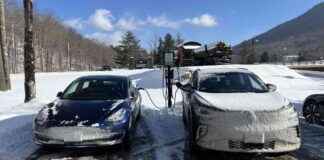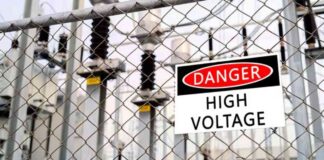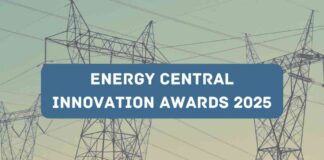The rapid advancement of artificial intelligence (AI) is revolutionizing various industries, but with this progress comes a significant issue: energy consumption. The surge in AI-driven computing is exerting immense pressure on power grids worldwide, necessitating a reevaluation of energy supply, efficiency, and infrastructure planning. Nowhere is this challenge more apparent than in data centers, which serve as the foundation for AI, cloud computing, and telecommunications.
### The Energy Demands of AI and Data Centers
At the core of AI’s ability to process vast amounts of data in real-time are graphics processing units (GPUs). These GPUs carry out billions of simultaneous calculations, enabling groundbreaking AI innovations. However, this computational power comes with a hefty energy requirement. According to Goldman Sachs Research, data center power consumption is projected to surge by 160% by 2030—an increase that current energy grids are ill-equipped to handle.
Globally, data centers contribute approximately 1% to electricity consumption, with regional disparities. For instance, in 2021, data centers in Ireland consumed 14% of the country’s electricity, a figure that escalated to 20.7% by 2023. As AI models become more sophisticated, their energy demands are anticipated to outstrip the development of new electrical supply and transmission infrastructure. This predicament has brought utilities, regulators, and technology companies to a critical juncture: how to balance the escalating energy needs of AI while ensuring grid reliability and equitable power distribution.
### The Role of Grid Resilience in Telecommunications
Grid resilience is not only vital for AI and data centers but also crucial for the telecommunications sector. Recent extreme weather events like Cyclone Alfred in Australia have underscored the immediate and severe repercussions of power grid disruptions on phone and internet services. As I mentioned to the ABC, ensuring energy security is essential for maintaining reliable telecom services. In countries like Australia, where a significant portion of the electricity network is above ground, power infrastructure is highly susceptible to storms and other climate-related events. Conversely, Western Europe has largely undergrounded its electricity infrastructure, enhancing resilience and minimizing disruptions.
A smarter, more resilient grid could bolster telecommunications reliability by integrating superior fault detection, automated response systems, and localized backup power solutions. With the continued expansion of AI, telecom networks will increasingly rely on high-powered data centers, making the fusion of energy and digital infrastructure indispensable for long-term stability.
### Closing the Gap Between Supply and Demand
Presently, utility companies are mandated to meet demand as it arises, leading to inefficiencies and inequitable burdens on local communities. Data centers, often supported by speculative developers, may request substantial power amounts before projects materialize. This compels utilities to invest in infrastructure that may not yield returns, leaving ratepayers to bear the costs in case of project failures. This system necessitates a revamp.
One potential solution lies in data centers assuming a greater portion of the financial risk for constructing new power infrastructure. Currently, utilities are cautious about permitting large energy users to shift costs onto the broader consumer base. By restructuring regulatory frameworks, data centers, given their substantial capital resources, could collaborate in grid enhancements like transmission lines and substations. This approach would alleviate pressure on utilities and ensure more sustainable expansion.
### Microgrids: A Solution for Resilience and Efficiency
Another promising avenue is the adoption of microgrids. These localized energy systems empower data centers to generate their electricity and even feed excess power back to the grid during peak demand periods. This transition could transform data centers into grid resources rather than energy consumers.
Microgrids, supported by renewable energy sources such as solar and wind, could diminish reliance on traditional grid power. Furthermore, progress in fuel cells and biofuels could supplant the heavy dependence on diesel generators for backup power. While battery storage alone may not yet suffice for large-scale data center needs, hybrid energy solutions could significantly reduce carbon footprints and enhance grid stability.
For telecommunications infrastructure, microgrids and distributed energy solutions could also ensure uninterrupted service during power outages. Medium-sized batteries at substations or mobile network towers could deliver essential backup power, reducing the risk of widespread outages impacting critical communication networks.
### AI-Driven Grid Optimization
AI itself can play a pivotal role in addressing these challenges. Smarter energy management utilizing AI can optimize electricity distribution by predicting demand fluctuations and dynamically adjusting supply. AI-enabled grid technologies can also enhance energy efficiency by streamlining power routing from generation sources to consumption sites. This approach has the potential to improve overall grid utilization, particularly in balancing intermittent renewable energy sources with AI-powered demand forecasting.
Emerging technologies like dynamic line rating and reconductoring, where carbon fiber materials replace traditional steel conductors to bolster power capacity, can further bolster grid efficiency. However, regulatory and financial incentives must align with these advancements to foster adoption.
### The Global Implications of AI Power Consumption
The energy challenge posed by AI transcends borders. Data centers worldwide are expanding rapidly, with countries like China making significant strides in AI infrastructure. The emergence of autonomous AI agents like Manus in China underscores the escalating need for computing power that operates independently and continuously. As AI systems become more autonomous, their energy consumption is poised to increase, exacerbating power grid challenges globally.
To stay competitive in the AI revolution, governments must invest in forward-thinking energy policies. The shift to AI-powered economies necessitates international collaboration on grid modernization, sustainable energy investment, and the advancement of next-generation infrastructure.
### The Path Forward
AI presents an opportunity for economic growth and scientific progress, contingent on a sustainable and resilient energy strategy. By fostering cooperation among utilities, regulators, and technology companies, a balanced approach can be achieved, one that supports AI’s expansion without overwhelming power grids or communities.
Investments in microgrids, AI-driven energy optimization, and fairer cost-sharing mechanisms for infrastructure development will be imperative. The power grid of the future must be as intelligent as the AI systems it supports, ensuring that technology continues to advance without compromising energy stability.
The AI era necessitates a reevaluation of how power is generated, distributed, and consumed. By embracing innovation and collaboration, we can transform this challenge into an opportunity for a smarter, more efficient, and sustainable energy future, one that also safeguards the resilience of telecommunications infrastructure in the face of mounting climate risks and energy demands.














